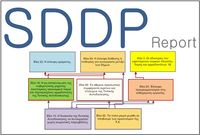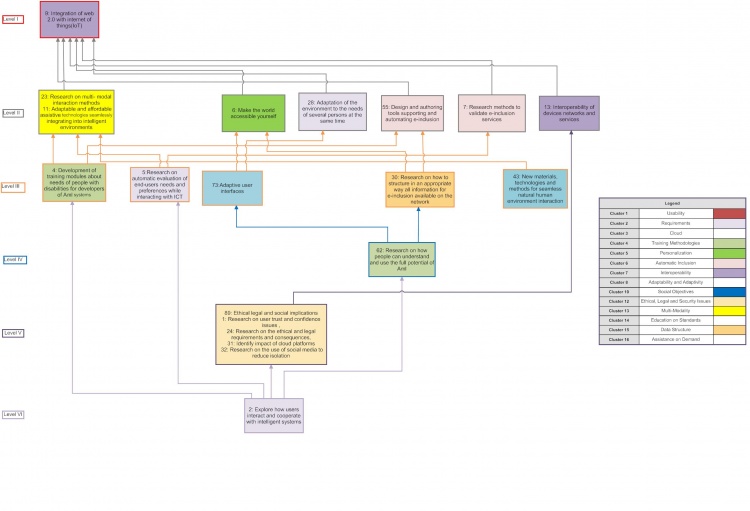SDDP CARDIAC III: Influence Tree for eInclusion Research and Development Priorities for WP4
|
Executive Summary
This report has been developed in the context of the Cardiac project (FP7 - Coordinating Action: Grant Agreement 248582).The CARDIAC project aspired to develop a series of roadmaps for future research and development in the area of accessible and assistive information and communication technology systems by inviting relevant stakeholders and experts from across Europe to participate in three Structured Dialogic Design Processes.
The Triggering Question (TQ) was
What research actions should be supported to exploit emerging network infrastructures and services to facilitate eInclusion?
In response to the TQ, the 22 participants came up with 93 actions, which were categorized in 17 clusters. Following the voting process, 54 ideas received one or more votes and were structured to create the influence MAP shown below.
According to the participants of this workshop, the characteristics appear to be the most influential were:
- Characteristic #2, Explore how users interact and cooperate with intelligent systems
The SDDP co-laborarory was facilitated by Yiannis Laouris (CNTI) and Marios Michaelides (CNTI). The workshop was attended by 22 participants from all over Europe.
In sum, the participants of the dialogue reported their satisfaction that their voices have been heard and documented and communicated their expectations for follow-up activities to address the diagnosis of their needs.

